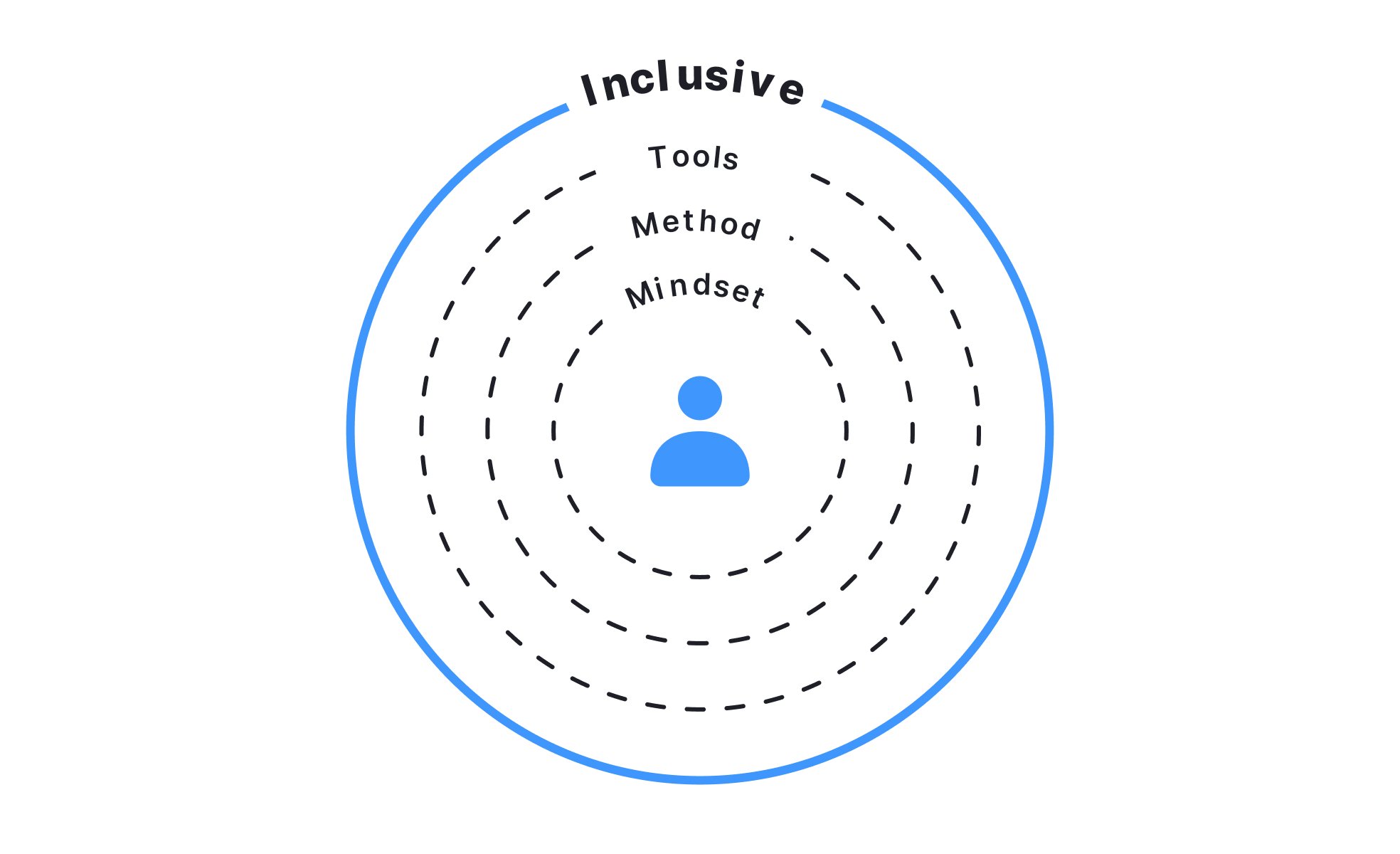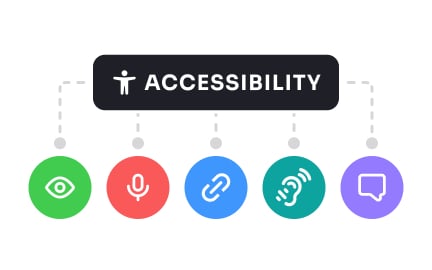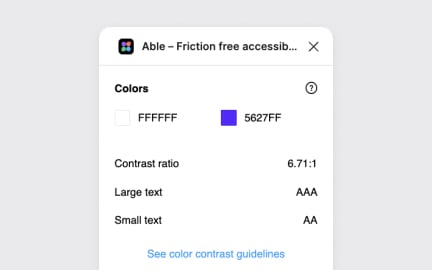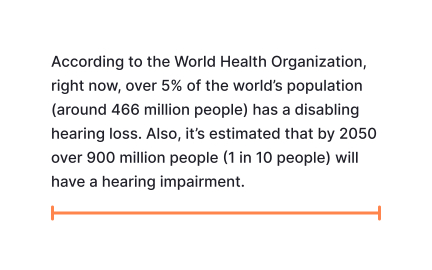Inclusive Design
Inclusive design creates experiences that serve users of all abilities and backgrounds, accounting for access needs from the start of the process.

What is Inclusive Design?
You realize your carefully designed product accidentally excludes entire groups of potential users. You've probably discovered that your "intuitive" interface doesn't work for people with disabilities, older adults, or users from different cultural backgrounds, cutting your addressable market by millions.
Most product teams think inclusive design is about compliance checklists when it's actually about designing for human diversity from the start, creating experiences that work better for everyone while dramatically expanding market reach.
Inclusive design is a methodology that recognizes the full range of human diversity including disability, language, culture, gender, age, and other forms of human difference as a core design constraint that drives innovation and creates better experiences for all users.
Inclusive design isn't just ethical, it's profitable. Companies practicing inclusive design principles report 28% higher revenue growth and reach 15-20% larger audiences than competitors who retrofit accessibility as an afterthought.
Think about curb cuts on sidewalks. Originally designed for wheelchair users, they now benefit everyone: parents with strollers, delivery workers, travelers with luggage. Similarly, inclusive digital design creates solutions that improve experiences for your entire user base.
Why Inclusive Design Matters for Product Teams
Your product has a beautiful interface that works perfectly for your team, but user research reveals significant barriers for real customers. You're losing potential users to competitors who better serve diverse needs, and you're facing potential legal compliance issues.
The cost of exclusive design is substantial. Fifteen percent of the global population has some form of disability, representing $13 trillion in annual disposable income. Companies like Target spent $6 million in legal settlements because they didn't prioritize accessibility from the beginning.
What inclusive design delivers:
Larger addressable market because design that works for people with disabilities typically works better for everyone. Microsoft found that inclusive features benefit 8x more users than originally intended.
Features like captions help not only deaf users but also people in noisy environments, non-native speakers, and users who prefer to watch videos silently. Good inclusive design has this multiplier effect across your entire user base.
Higher user satisfaction scores because inclusive products reduce friction for all users. When you design for someone with limited mobility, you often create interfaces that are easier for everyone to use.
Consider how voice control was originally designed for accessibility but now benefits anyone driving, cooking, or multitasking. Inclusive design creates features that seem innovative to mainstream users.
Improved SEO and discoverability because accessible markup and clear content structure make your product easier for search engines to understand and index.
Legal compliance that protects against expensive lawsuits and regulatory penalties. Proactive inclusive design costs significantly less than retrofitting accessibility features after legal pressure.
Innovation catalyst that pushes teams to create more creative, robust solutions. Designing within accessibility constraints often leads to breakthrough features that benefit all users.
Advanced Inclusive Design Strategies
Cognitive Accessibility Focus: Design for users with learning differences, ADHD, or cognitive disabilities through clear information hierarchy, consistent navigation patterns, and reduced cognitive load. This typically improves experiences for all users dealing with stress or distraction.
Cultural Inclusivity Integration: Consider how design patterns, color meanings, interaction metaphors, and content examples work across different cultural contexts. This is especially important for global products or diverse domestic markets.
Temporary Impairment Design: Design for users with temporary limitations: broken arms, eye injuries, noisy environments, or poor lighting conditions. This perspective often reveals inclusive solutions that weren't obvious when designing for permanent disabilities only.
Economic Accessibility Considerations: Account for users with limited data plans, older devices, or unreliable internet connections. Inclusive performance design often results in better experiences for all users.
Inclusive design refers to the practice of designing products, services, and environments that are accessible and usable by a diverse range of individuals, regardless of their abilities, age, gender, or cultural background. It aims to create inclusive experiences that consider the needs, preferences, and limitations of all users, promoting equal access and participation.
Inclusive design is important for several reasons:
- Accessibility: It ensures that products and services are accessible to individuals with disabilities, allowing them to fully engage and participate in various aspects of life.
- User satisfaction: By considering a wide range of user needs, inclusive design leads to products and services that are more user-friendly and intuitive. It enhances user satisfaction and can even attract a broader customer base.
- Social responsibility: Inclusive design promotes social equality and inclusion by breaking down barriers and providing equitable opportunities for all individuals to engage in daily activities and interactions.
- Innovation: Designing for diverse needs often drives innovation and fosters creative problem-solving. It encourages designers to think beyond traditional assumptions and explore new approaches that benefit a wider range of users.
To incorporate inclusive design principles into your projects, consider the following:
- User research: Conduct thorough user research to understand the needs, abilities, and limitations of your target audience. Engage with diverse users and involve them throughout the design process to gain insights and feedback.
- Accessibility guidelines: Familiarize yourself with accessibility guidelines and standards, such as the Web Content Accessibility Guidelines (WCAG) for digital design, and implement them to ensure your designs are accessible to individuals with disabilities.
- Empathy and inclusivity: Cultivate an empathetic and inclusive mindset throughout the design process. Challenge assumptions, consider diverse perspectives, and involve a diverse team in the decision-making process to address a broader range of needs.
- Testing and iteration: Regularly test your designs with diverse users, gather feedback, and iterate based on their insights. This iterative approach helps identify and address usability barriers and ensures continual improvement.
Check out our Inclusive Design Basics lesson to learn more.
Recommended resources
Courses

Accessibility Foundations

UX Design Foundations

Design Terminology
Lessons

Intro to Accessibility

Accessibility Tools

Multimedia Accessibility
Exercises
Tutorials

How To Celebrate Failures With Your UX Team

11 Real-World Design Examples that Prioritize Accessibility

Ethical principles for creating responsible and user-focused UX design
Projects

HireHarbour Allies: UX/UI Case Study for Inclusive Landing Page

UX/UI Case Study for Inclusive Landing Page for Parliament of Georgia














